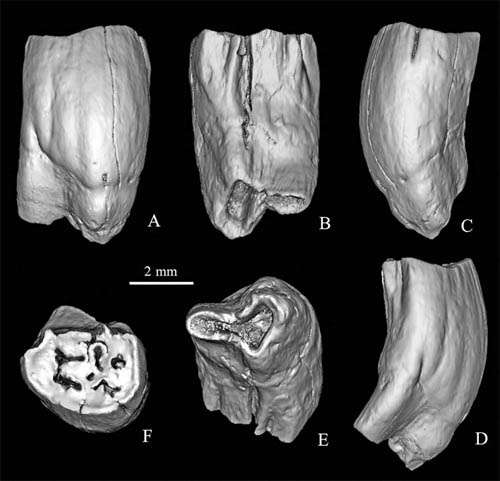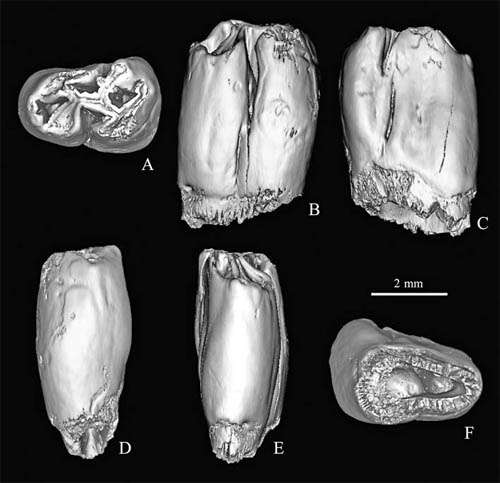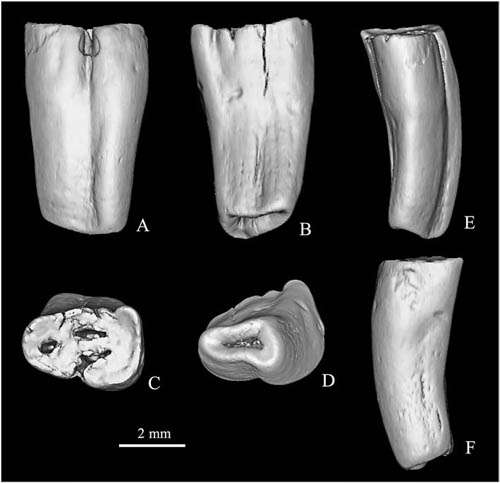New species of mylagaulids (rodentia) found from the Miocene of northern Junggar Basin, China

Mylagaulids is an extinct group of Aplodontoidea (Rodentia). Most genera possess high crowned and complex cheek teeth with numerous enamel bordered lakes of different depths, which vary in size and shape with wear. Thus, it is very difficult to make taxonomic determination and assess the relationship of small samples.
Dr. WU Wenyu, Institute of Vertebrate Paleontology and Paleoanthropology (IVPP), Chinese Academy of Sciences, and her collaborators applied the CT scanning technology to the study of tooth morphology of mylagaulids, and identified two genera and species, Tschalimys ckhikvadzei and Simpligaulus yangi gen. et sp. nov., from the early Middle Miocene Halamagai Formation in northern Junggar Basin of Xinjiang, China. Researchers reported in the latest issue of Vertebrata PalAsiatica 2013 (1), providing additional information on the morphology of the mylagaulids.

Mylagaulid originates in the Late Oligocene and diversifies through Miocene in North America. Outside North America, mylagaulids have so far only been discovered from the early Middle Miocene of Zaisan Basin of Kazakhstan and northern Junggar Basin of China in Central Asia. Apolodontia rufa (mountain beaver), is the only living aplodontid and the relative of mylagaulids, inhabiting forests and densely vegetated thickets in the humid regions of western North America. They burrow in soil which is moderately firm and deep with adequate drainage.
The integrated studies indicate that the Halamagai Formation is fluvial-lacustrine sediments formed during the time coincident to the Mid-Miocene Climatic Optimum. T. ckhikvadzei and S. yangi probably inhabit the humid and warm regions with forests and densely vegetated thickets as the living mountain beaver Aplodontia rufa does. These mylagaulids are probably immigrants or the descendants of the immigrants from west North America.

"Scientists traditionally studied the mylagaulids teeth by grinding serial sections. It is essential to have sufficient material for making serial sections, thus this method is not practical for the research based on very few samples. The recently wide application of computed tomography technology in the paleontology makes it possible that our three mylagaulid teeth can be observed in detail without destruction", said first author WU Wenyu of the IVPP.
Journal information: Vertebrata PalAsiatica





















